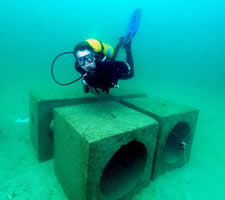Boat ramp update 7-8-2011 from Captain Tommy Thompson
/Captain Tommy Thompson has an update on the Steinhatchee Boat ramp on his blog:
I finally had a chance to stop by and inspect the new boat ramps at Steinhatchee. Of course, they were to have been completed by July 1, the original opening day of recreational scallop season. Based on a conversation with a couple of the workers setting dock pilings, here’s my take:
The facility will likely open within the next two weeks. There are at least 3 ramps that could be used at the same time, depending on the skill and politeness level of the boaters. The ramps are concrete and solidly built. There will be a number of floating and fixed docks. The basin has been dug out and lined with rock to prevent filling in. The parking lot will not be paved at this time, but depending on the availability of funds, that may happen in the near future. There is a larger parking lot across the street as well as the one adjacent to the ramps. There likely will be a charge to launch, but the Taylor County Commission has yet to firm up those details. There are also conversations held regarding the use of the facility by commercial fishermen and guides. I expect those details to be available soon and will post them here when they’re firm.
You can view his post here.









